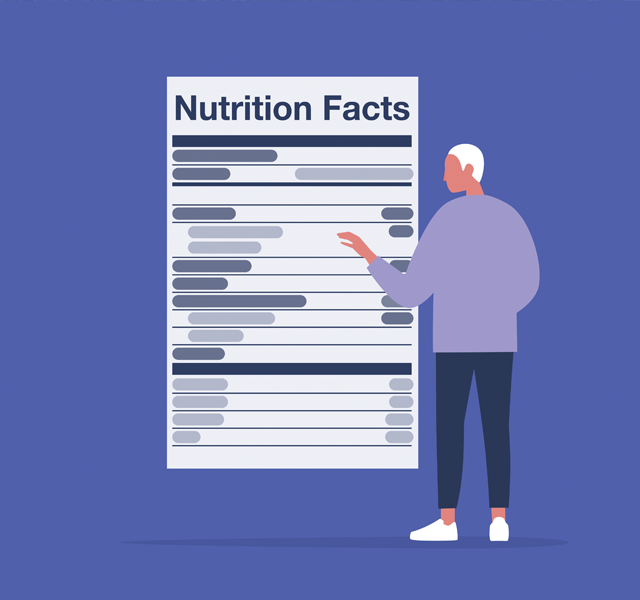The Cardiologist’s Wife: Understanding Ultra-Processed Foods
The Cardiologist’s Wife: Understanding Ultra-Processed Foods
The industrialization of food production in order to feed a growing population has led to cheap, mass-produced food-like substances that are nutritionally questionable. These ultra-processed foods, or UPFs, fill our grocery stores to the point that the average American now gets roughly 60% of his or her calories from foods like bars, cereals, frozen convenience foods, fast foods and snack foods. Ultra-processed foods have totally altered the way we eat, and not for the better.
There are many health concerns that arise from eating too much of these types of foods, such as high blood pressure, diabetes, obesity, cancers and heart disease. Recent research has led scientists to believe that consuming a diet filled with UPFs is associated with higher rates of anxiety, depression and even cognitive decline. Knowing more about UPFs can help you make better choices for you and your family’s nutritional needs.
Brazilian researchers developed a food classification system called NOVA that is now widely used by scientists who study food, nutrition and health. NOVA assigns food into four categories from unprocessed to ultra-processed. Group one is unprocessed or minimally processed foods - fresh fruits and vegetables, meats, eggs, milk. Group two is processed culinary ingredients like sugars, oils and butter. Group three is processed foods like canned vegetables, breads, cheeses and cereals. Group four is the ultra-high processed foods that usually are high in salt, sugar and fats while being low in fiber, minerals, vitamins and protein, such as packaged baked goods, sodas and crackers.
NOVA defines UPFs as foods that are made by extracting substances from whole foods and altering them with chemicals or additives to produce the final product. A hallmark of ultra-processed foods is that they contain ingredients rarely used at home, those unpronounceable long chemical sounding words that make you think of industrial uses, not food – high fructose corn syrup, hydrogenated oils, disodium insinuate, disodium guanylate, xanthum gum, etc. The more processed a food is, the less it resembles real food and the longer its shelf life.
Before eating, almost all foods are processed to some degree, except for raw fruits and vegetables. Cooking is a process and usually involves adding ingredients like oils, salts and other seasonings. But ultra-processed foods have been engineered to be very palatable, even addictive. Food scientists know that our bodies evolved to survive famine by developing an affinity for carbs and fatty foods. They have designed UPFs to contain easily digested carbs and simple sugars paired with salt and fat, the sweet spot for our tastebuds and the reward center in our brain.
When we feel happiness or joy, it’s because of the release of dopamine and serotonin which are the so-called feel-good chemicals in our brain. Various things trigger the release of these chemicals, such as exercise, seeing a newborn or playing with a pet. Alcohol and drugs can also cause these good feelings, as can highly processed foods. Whole foods cooked so that they are still recognizable contain nutrients such as fiber that slows our digestion and how quickly our bodies absorb those nutrients. On the other hand, ultra-processed foods lack such additional nutrients and are full of quickly digested and absorbed carbohydrates and added fats. This gives our brain a hit of dopamine and leaves us craving more.
Why should we worry? Scientific evidence has long linked eating these processed foods like hot dogs, chips and packaged sweets with various health problems. Now there may be more cause for concern. Two studies in 2022 found that the more UPFs a person ate, the more likely they were to suffer from feelings of anxiety or depression. Another study followed 11,000 adults over a decade and found that the more UPFs a participant consumed, the more they experienced a decrease in cognitive function (the ability to learn, remember, reason and solve problems) by as much as 28%. Other studies have found that eating a healthy diet overall while eating UPFs occasionally seemed to offset any negative impacts from UPFs, but researchers don’t know what amount of UPFs can be considered safe to consume.
While more studies are needed to find definitive answers, researchers believe UPFs negatively affect gut health. Our gut needs plenty of fiber to function properly, and diets high in UPFs are notoriously low in fiber and other nutrients important for gut health. Fiber is also necessary to produce short chain fatty acids, which are substances produced when your gut bacteria ferments fiber that you have eaten. These short chain fatty acids are important for brain health and protect against diseases like cancers.
It’s easy to see that the only good things about UPFs are their taste and convenience, but that convenience comes with a pretty steep price in terms of your health. Children raised on a steady diet of junk can expect to have health problems at an early age and perhaps a shortened life span. Don’t let package wording like “organic,” “made with whole grains” or advertisements for plant-based food fool you into believing a processed food is healthy; even organic, plant-based foods have become UPFs like some oat milks and snacks marketed for babies and toddlers. Read the nutrition label. Better yet, focus your diet on whole, fresh fruits and vegetables, whole grains and meats that you prepare at home.







